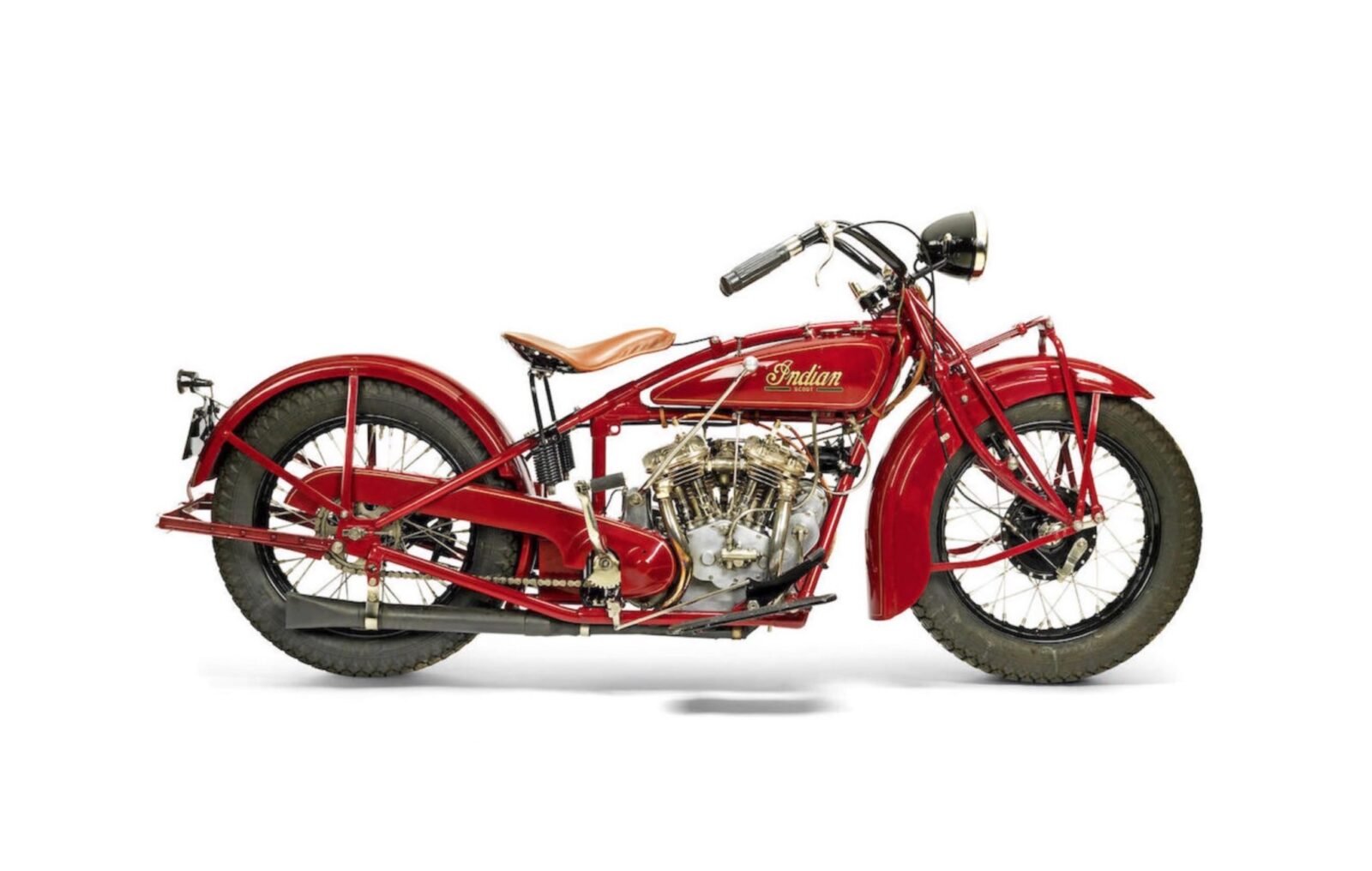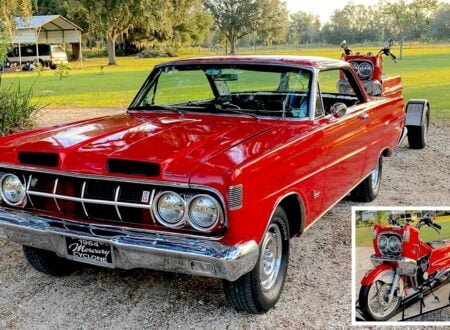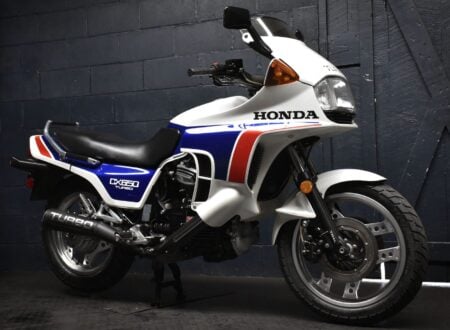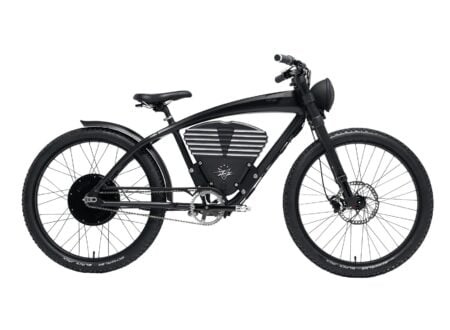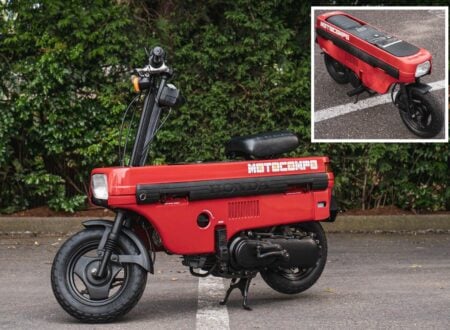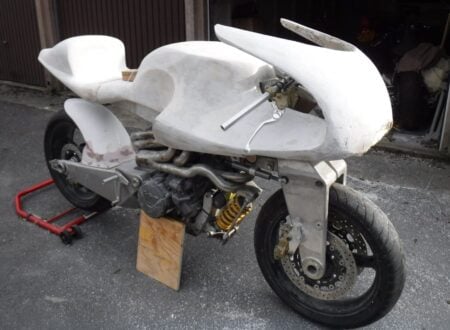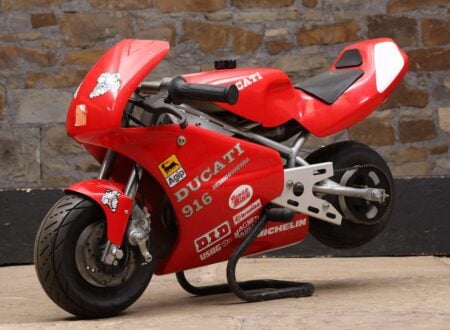Charles B. Franklin: the Engineer with Practical Experience
Charles Bayly Franklin, the engineer who was to create three of the most iconic Indian motorcycles, was born in the Irish City of Dublin on October 13, 1880.
His early life was one in which he rapidly learned the value of life as scarlet fever took its toll on his family with four of his siblings dying from the disease and Charles himself not only surviving a bout of that killer disease himself but also coming close to death with a bout of pneumonia.
Life was hard and young Charles seems to have determined to get the best out of life while he could.
Getting the best out of life for young Charles meant getting a good education, and making the most of that education to pursue his dreams.
Even though when he was enrolled at St. Andrews College, Dublin at the age of fourteen in 1894 he would not yet have had a fully formed idea of what that future would entail, nor that it would take him away from Dublin to the United States where he would design motorcycles, including bikes that would break speed records and eke out a major place in history.
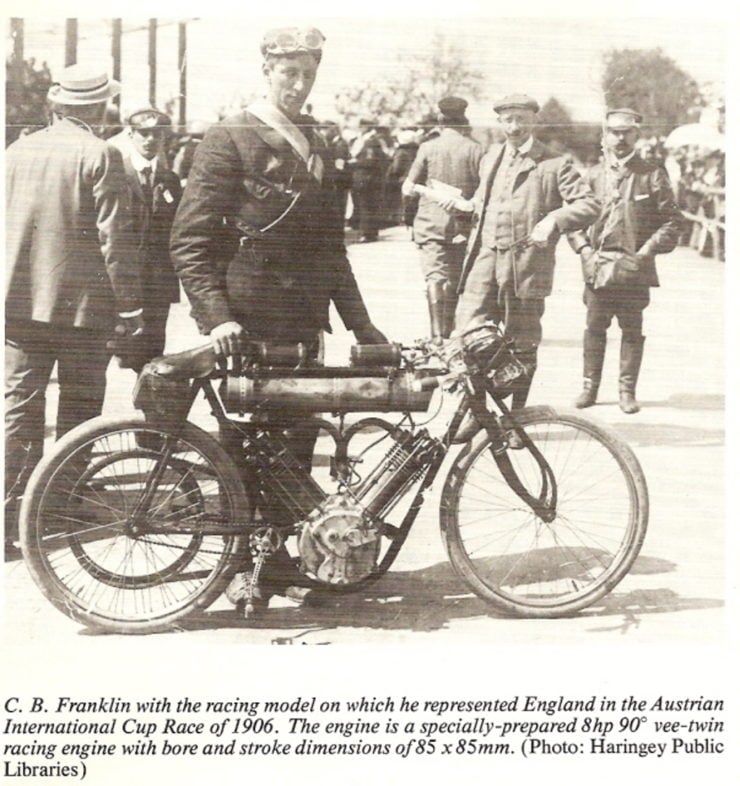
After he left St. Andrews Charles Franklin entered the Civil Service and trained to become an electrical engineer, subsequently obtaining a post as an engineer at the Rathmines power station in south Dublin.
Having a job, and income, and both the need for transportation, and cash to afford it, Charles started riding motorcycles and became bitten by the speed bug and smitten with motorcycle racing.
Having acquired a passion for motorcycles and racing Charles began his racing career in 1903 and would compete in all manner of events culminating in the Isle of Man TT beginning in 1908 and continuing through to 1914, in which he consistently finished in the top ten other than in 1910 and 1912 when he did not finish, and in 1911 managed outright second place.
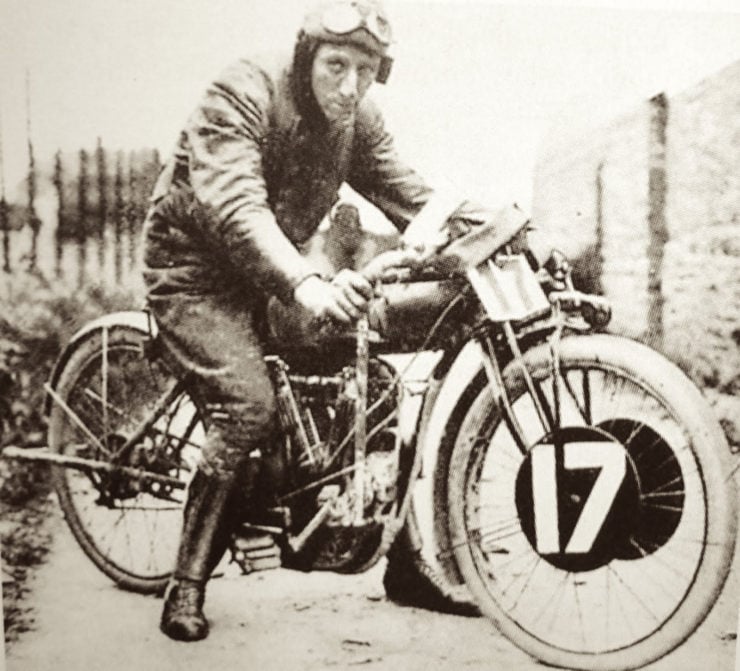
1910 was a pivotal year for Charles Franklin, it was the year he resigned his job as an engineer at the Rathmines Power Station and set up his own Indian dealership.
He worked on tuning and racing Indian motorcycles and in 1912 at the famed Brooklands race track in Britain became the first man to cover 300 miles in 300 minutes. His bike for that was a double valve twin cylinder (i.e. eight valve) racing Indian.
Back then the company that manufactured Indian motorcycles was called the Hendee Manufacturing Company, named after company founder George M. Hendee.
They initially intended to employ Franklin as the man in charge of their main depot in Dublin, however provenance was to intervene in the form of a new tax of 33⅓% on “luxury goods” such as motorcycles. The rationale for the tax, which was introduced in 1915, being to help England pay for the Great War which was at that time raging. Indian’s response to this was to close their depot in Dublin and bring Charles Franklin to the United States to work in their design department.
So it was that Charles B. Franklin departed from Ireland in October 1916 and went to work at the headquarters of Indian in Massachusetts. Thus it was that this trained engineer with a great depth of practical knowledge and hands on skills was positioned to create the most famous motorcycle models Indian would produce.
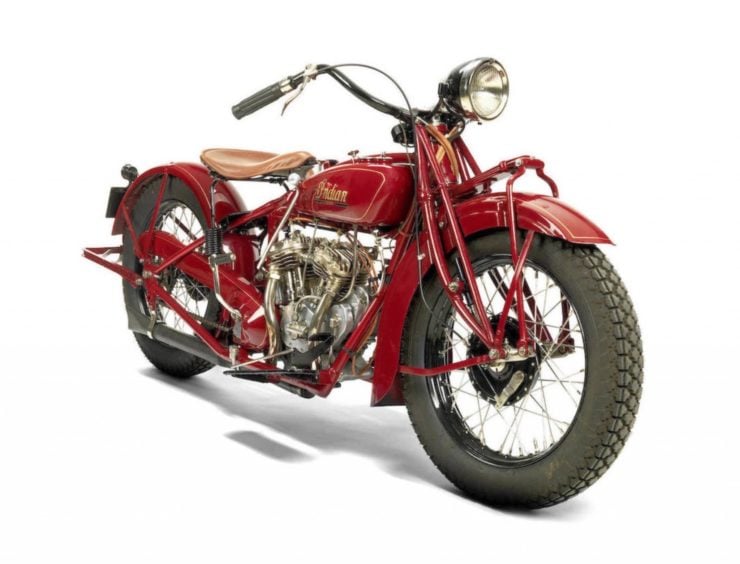
The Indian Powerplus Engine
1916 would be the year that founder George Hendee resigned from the company he had begun. It was also the year before the United States would enter the First World War that had begun in Europe in 1914.
The period of the war saw Indian selling its Powerplus engine powered motorcycles predominantly to the US Military, a move that while being a short term commercial success finished up costing the company badly as it starved the US dealer market of bikes to sell and dealt a severe blow to customer loyalty: customers who couldn’t buy the Indian they wanted went and bought a Harley-Davidson instead and shifted their brand loyalty to them.
This was the environment Charles Franklin found himself in. It had been in 1907 that Charles Gustafson had been employed by the Hendee Manufacturing Company to create new engines for Indian motorcycles.
At that time racing and competition motorcycle engines had tended towards complexity as evidenced by Charles Franklin’s use of an eight valve V-twin JAP (J.A. Prestiwich) around that time in his racing career. But in the years leading up to 1916 Gustafson had been charged with creating an engine that would combine power with simple and inexpensive manufacture.
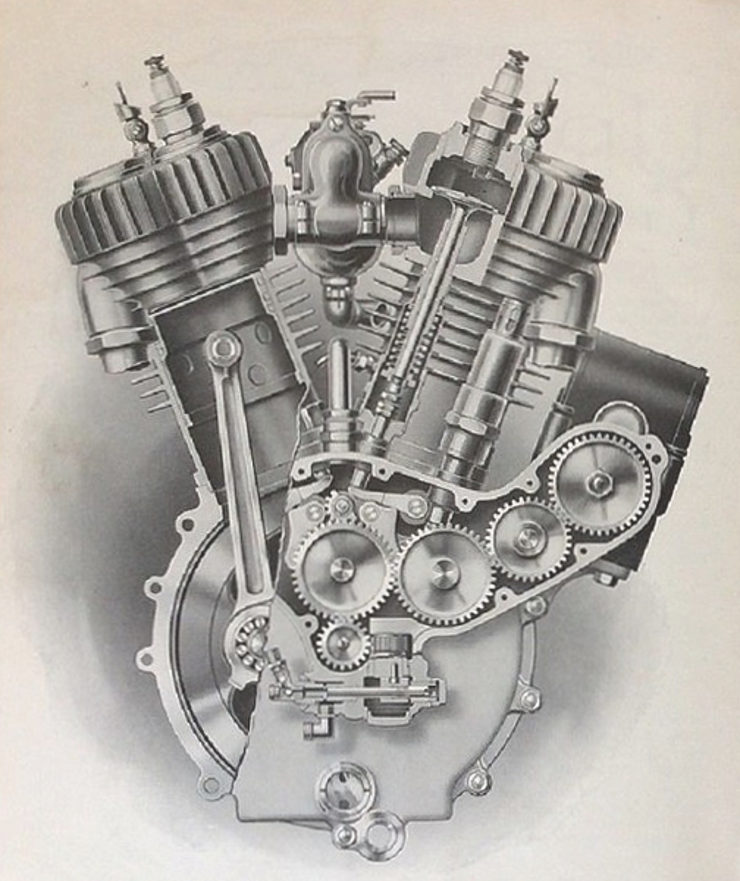
Above Image: An Indian Powerplus V-twin cutaway.
The design that emerged from Gustafson’s use of a sharp mind and sharp pencil was his 1,000 cc (61 cu. in.) Powerplus V-twin. This engine proved itself to be very good and the design was created prior to Charles Franklin’s arrival at Indian’s Massachusetts factory: improvement of that engine became Charles’ first design job in the United States.
Charles Franklin had done a lot of experimenting with engines during his competition career and had combined those experiments with practical experience riding bikes powered by his experiments. So he not only knew the theory, he knew how application of that theory felt once you were on the track trying to go just as quickly as you could without coming to an untimely end. He had thus obtained a great deal of expertise with Indian engines and the bikes they were fitted in.
In his experimentation Franklin had discovered the “squish” principle in 1914 while working on an Indian F-head (inlet over exhaust) side valve engine. To use the “squish” effect the combustion chamber was reduced to practically nothing in the area above the piston from the far side from the valves to the center of the piston. The roof of the combustion chamber was then progressively increased in height until it was in the area where the overhead inlet valve and underneath exhaust valve were located, so combustion primarily took place in that area where the valves were with the pressure of combustion then acting on the piston to drive it down during the power stroke.
Franklin set about race tuning the Powerplus engine with the result that the Indians became the fastest things on two wheels. By 1926 even the complex double valve racing engines could not keep up with Franklin’s side-valve V-twin Powerplus and rivals such as Harley-Davidson were forced into investing in racing side-valve engine development to try to catch the Indians. Harley-Davidson rider Albert “Shrimp” Burns had been so impressed he changed teams and joined with Indian. Burns would go on to win a national championship at an average speed in excess of 100 mph. The Powerplus engine had become Powerplus in fact as well as in name.
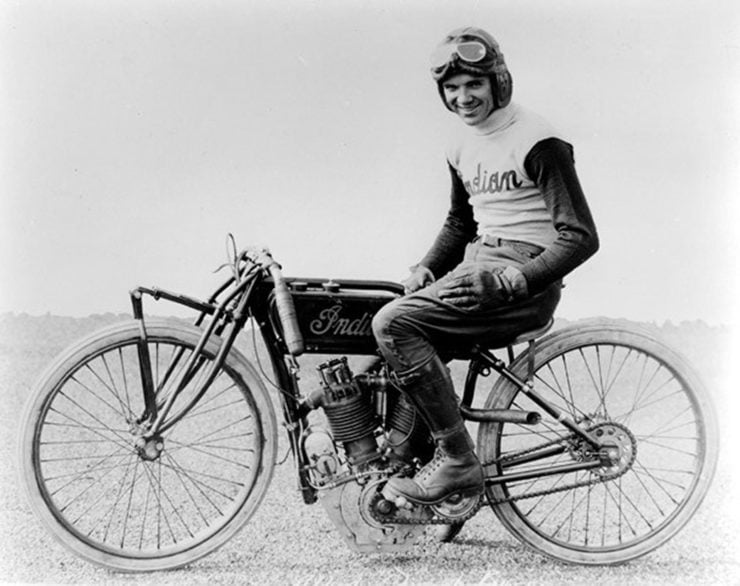
Above Image: Albert “Shrimp” Burns on an Indian.
While the competition were busily trying to play catch-up Charles Franklin moved to create a new smaller version of his tweaked up Powerplus to install in a lightweight motorcycle, a combination that was going to make a lot of people sit up and take notice.
Charles Franklin’s new version of the Powerplus V-twin was reduced in size to 37 cu. in. (606 cc). This design used twin cams and had the engine bolted directly to the gearbox enabling the use of a direct gear primary drive rather than the more high maintenance chain drive in common use at the time.
The Indian Scout
To go with the new 37 cu. in. V-twin engine Charles Franklin designed a new lightweight motorcycle which made its debut in October 1919. This new model was designated the Indian Scout and it quickly became the bike that defined Indian.
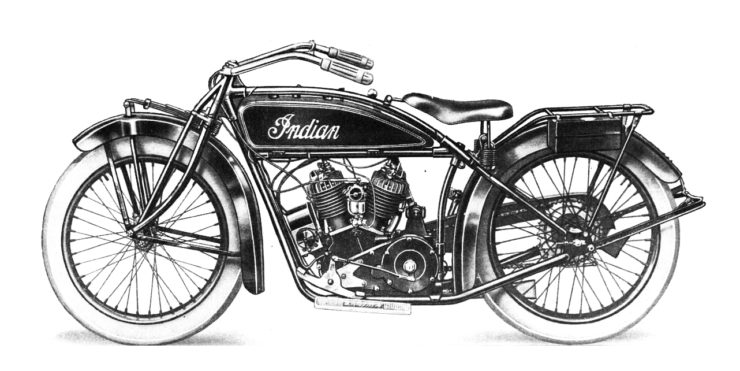
Franklin’s new Indian Scout featured a fairly short double cradle frame, it was lightweight tipping the scales at 370 lb, and his new engine with its geared primary drive helped it have a lot of reliability. That geared primary drive connected to a three speed gearbox via a wet clutch.
This was to become not only a popular road bike, but also a popular and successful competition bike, and it also became the bike favored for stunt riding, especially the “Wall of Death” shows sometimes called “Silodrome” when they were performed on vertical velodromes that looked like grain silos.
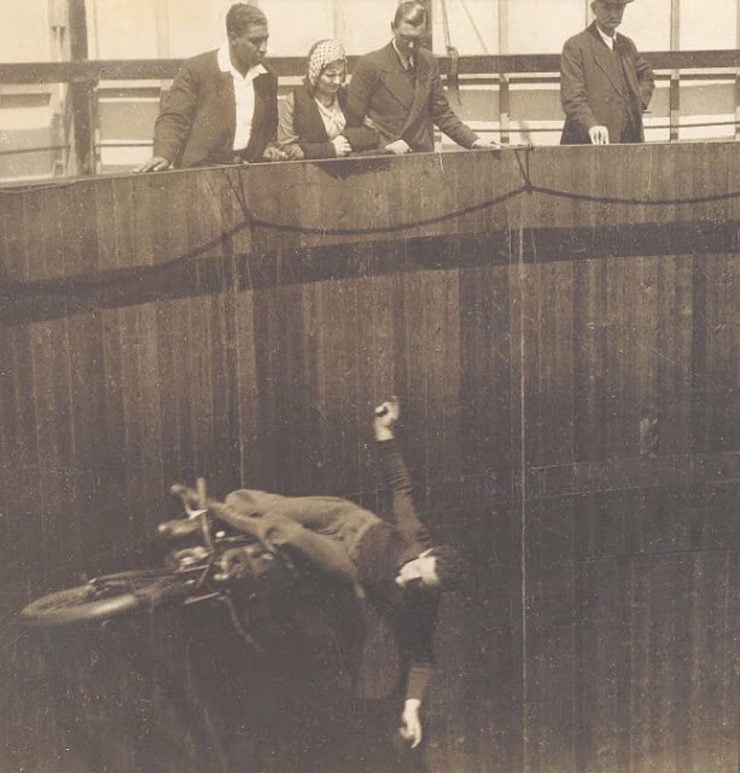
Above Image: A man performing stunts in an early Silodrome or “Wall of Death”.
In 1924 the name of the Hendee Manufacturing Company, who had been the builders of the Indian motorcycles from the beginning, was changed to the Indian Motocycle Company. Although we are nowadays used to the term “motorcycle” back then the word “motocycle” referred to a motorized bicycle or motorized vehicle such as those with three or four wheels.
In 1926 the AMA (American Motorcyclist Association) established a racing class for 45 cu. in. capacity bikes. So with this competition class firmly in their sights Indian had Charles Franklin enlarge the 37 cu. in. engine to 45 cu. in. for the lightweight Indian Scout. This was accomplished by increasing the bore from 2 3/4 inches to 3 1/16 inches, and the stroke from 2 7/8 inches to 3 1/2 inches giving a capacity of 45.44 cubic inches.
This 740 cc (45 cu. in.) unit was of 25% greater capacity but of significantly more power than that 25% increase provided. It was a free breathing little powerhouse that propelled the Scout with great enthusiasm. And great was the buyer enthusiasm for it such that the smaller 37 cu. in. engine was rarely ordered although it continued to be offered.
The Indian 101 Scout Makes its Debut
Charles Franklin’s next creation was to be his “piece de resistance”, a motorcycle that would go down in history as one of the greats of all time. Despite the fact that many would have believed in the old saying “You can’t improve on perfection” Franklin proved them wrong and did exactly that. His new model was the Indian Scout 101 and it really represented an intelligent tweaking of his original Scout design to perfect it.
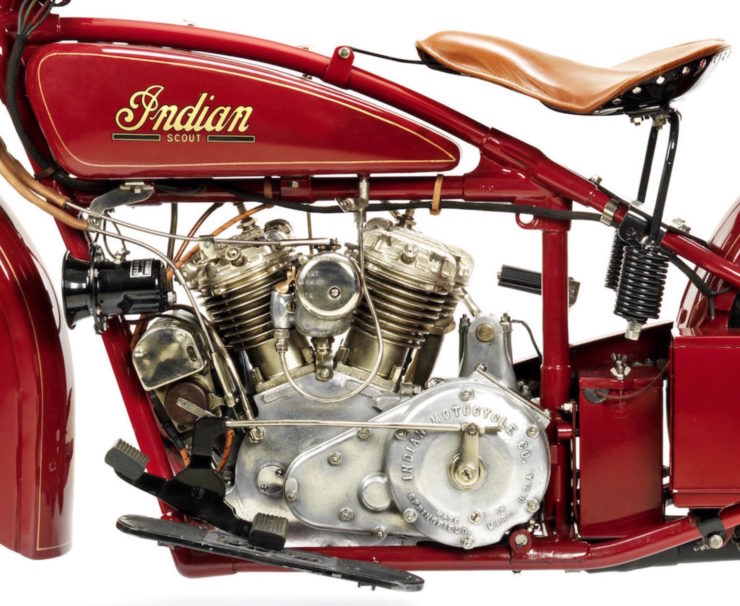
The changes were modest but effective. The frame was a new design with the front fork rake angle increased and the seat height lowered so it sat about 25½ in. to 26 in. high. With the longer wheelbase, increased rake angle and lowered seat the Scout 101 became a comfortable, stable motorcycle with quite glorious handling. It became an instant hit with both road and track riders, and with stunt riders also. It was the ultimate fulfillment of Charles B. Franklin’s knowledge and experience earned in the hard and dangerous school of early 20th Century motorcycle competition.
The Indian Scout 101 first appeared in mid-1928 and would remain in production only until 1931. It was referred to as “The best motorcycle ever made” by enthusiasts”, a title it probably deserved.
The Indian Scout 101 was sadly to be Charles Bayly Franklin’s swan song. He became seriously ill in late 1931 and passed away in October 1932.
There were two models of the Indian Scout 101 made, the standard with the longer wheelbase, and a “Police Special” which was made with a slightly shorter wheelbase for improved maneuverability. These were fitted with the 45 cu. in. engine.
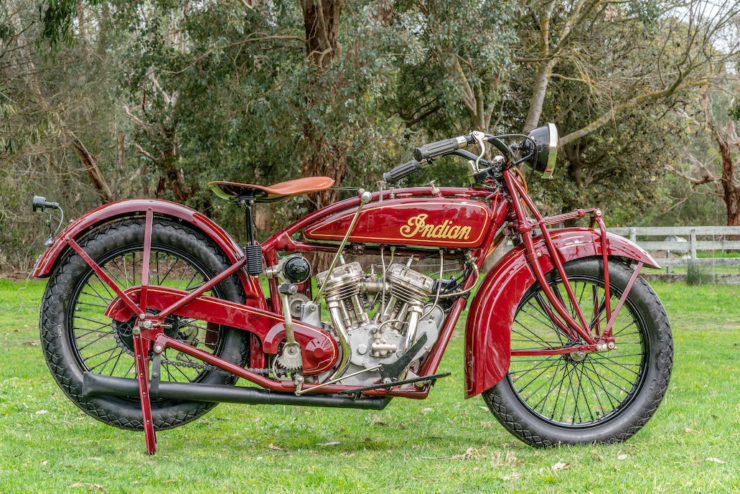
During that period following the Wall Street Crash of 1929 the world, including the United States, was plunged into the Great Depression and the Indian Motocycle Company faced financial ruin. It was saved by DuPont family who wound back their automobile business to focus on preservation and development of the Indian Motocycle brand. However, whereas Charles Franklin had brought to Indian a great depth of engineering and practical knowledge the DuPont family brought in financial and business skills.
The DuPont strategy to save the company was to rationalize the product line-up and so all models were to be built on essentially the same frame. This meant that the light and lively Indian Scout 101 was replaced by the clumsy 1932 Scout built on a “universal” frame that was to be used for the Indian Chief, Four, and Scout. A frame that was big enough and heavy enough to accommodate the inline four cylinder engine, and the big 1,000 cc Chief engine was of course going to be too big and heavy for the Scout. Without doubt there was much arguing among the Indian Scout aficionados and sales of the new Scout were at best disappointing.
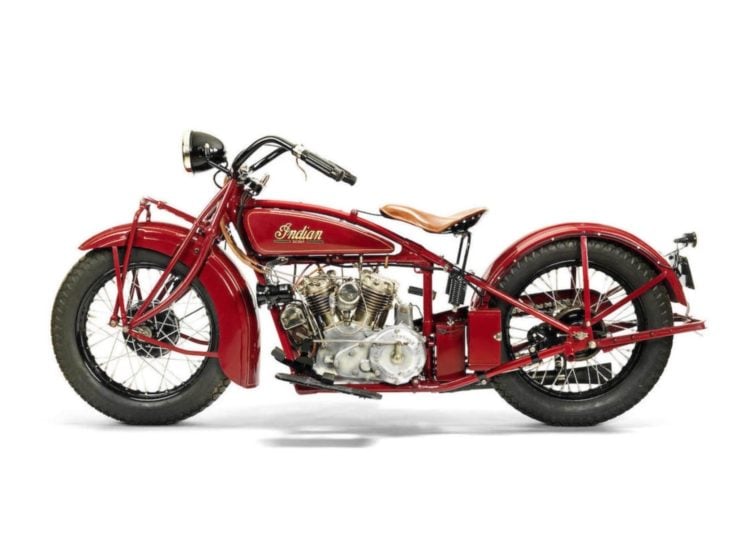
Thus it was that the Indian 101 Scout passed from production into legend and nowadays an original 101 Scout will sell for rather handsome amounts of cash.
Indian Scout and Scout 101 Specifications
Engines: From 1919 and throughout production the original engine was an 18hp 37 cu. in./606 cc 42° V-twin F-head inlet over exhaust side valve. In 1927 a larger 22hp 740 cc/45 cu. in. engine was offered and sales of the original smaller engine all but vanished.
Carburetor: Schebler
Electrical System: 6 volt, Ignition by magneto.
Transmission: Three speed manual with multi-disc wet clutch. The transmission was bolted directly to the engine and thus was able to use a gear primary drive rather than the chain drives commonly used at that time.
Brakes: Indian Scout 1919-1927 rear brake using external expanding bands. Scout 101 1928-1931 front brake internal expanding shoes. Rear brake external contracting bands.
Frame and Suspension: Double-cradle tubular steel frame with girder forks using a leaf spring at the front and rigid frame at the rear. The Scout 101 used an increased front fork rake angle and provided an increased wheelbase.
Wheelbase: 57⅛ in. (1,450 mm) for the Scout 101
Wheels and Tires: 18″ wire. For 1928 clincher rims were used. From 1929-1931 drop center rims. Tires 3.85×18″ front and rear.
Weight: Kerb weight 370 lb. Dry weight approximately 295 lb.
Seat Height: 26 in. (Scout 101).
Burt Munro and “The World’s Fastest Indian”
No article on Charles B. Franklin’s Indian Scout would be complete without a mention of the fastest Indian Scout ever taken to the Bonneville Salt Flats.
A gentleman named Burt Munro from “The Land of the Long White Cloud” (i.e New Zealand) purchased an original 1920 Indian Scout and rode it until 1926 before deciding he’d like to make it go a bit faster.
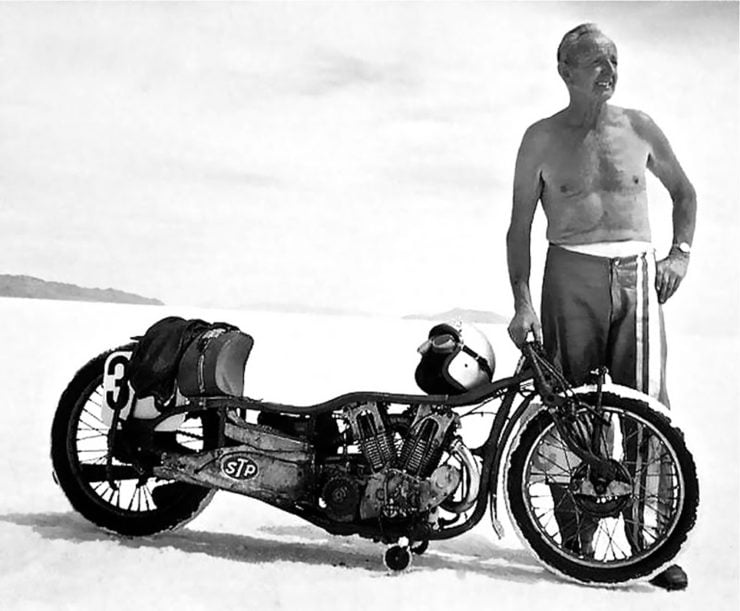
Burt’s bike had been the 627th to leave the Hendee Manufacturing Company factory and had been fitted with the original 37 cu. in./606 cc engine. By the time he took his heavily modified Indian to Bonneville in 1963 the engine displaced 850 cc and he set an 883 cc class speed record of 178.95 mph/288 km/h. When he went back in 1966 the bike’s engine was now 920 cc and he set a 1,000 cc Class record of 168.07 mph/270.476 km/h.
Burt’s final trip to Bonneville was in 1967 with the engine bored out a bit more to 950 cc. He set a new 1,000 cc class record of 183.59 mph/295.453 km/h.
Burt Munro’s story is told in the 2005 movie “The World’s Fastest Indian” starring Anthony Hopkins.
The Legacy
Charles Bayly Franklin blazed a trail that led to his Indian designs being so reliable and long lived that the slogan “You can’t wear out an Indian Scout” became something of a catch phrase. But his contribution to Indian was his engineering combined with the practical experience that gave him a deep understanding of motorcycle design.
Although Charles Franklin may have passed away his influence did not and Indian’s efforts to market a “Scout” with a heavy frame didn’t work and so in 1934 as the effects of the Great Depression were easing they went back to Franklin’s lightweight frame concept with the Sport Scout. With its girder forks, alloy cylinder heads for weight reduction and much improved heat dissipation, and its better carburation this was a bike like the original Indian Scout and it went on to establish its “street cred” by winning the first ever Daytona 200 in 1937.
I think that among the designers who picked up the baton after Charles Franklin we should count Briton Phil Vincent and Australian Phil Irving who worked together to create the Vincent V-twin motorcycles. The connection is that Indian and Vincent tried working together in the post-war period. In 1948 Indian sent an Indian Chief to Vincent in Britain so they could fit a 998 cc Vincent Rapide V-twin engine in it. When complete the bike’s performance was impressive indeed with a top speed of 114 mph.
In addition to that bike, dubbed the “Vindian”, Vincent also created a remodeled version of their own sophisticated Vincent Rapide which they called the Indian Vincent to offer as a sports bike with impeccable handling – a bike that would have been a more modern expression of Charles Franklin’s thinking when he designed the original Scout. Unfortunately the efforts at cooperation did not work out and both Indian and Vincent went out of business.
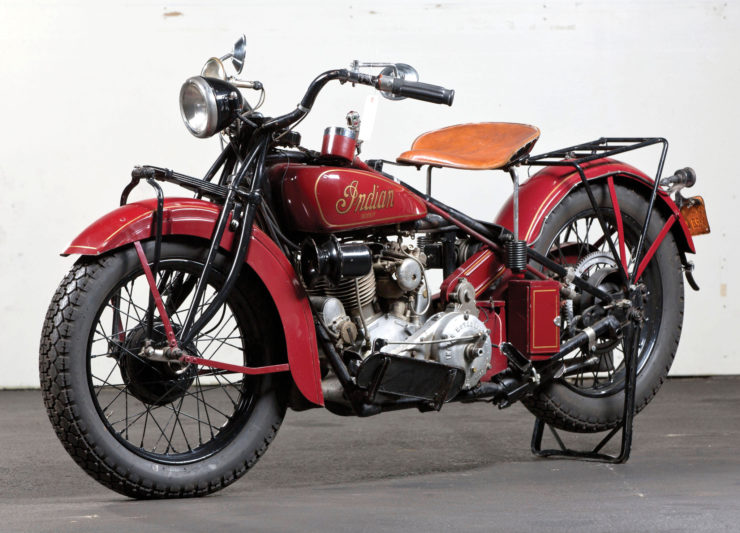
Charles Franklin’s legacy in the motorcycles he designed lives on and his Scout and Scout 101 are motorcycles that are earnestly sought after by enthusiasts and collectors nowadays. They are a bike that was made to be ridden and enjoyed and many owners do exactly that despite the collector value of their bikes.
That many still describe the Indian Scout 101 as “The best motorcycle ever made” is testimony to Franklin’s design. Its hard to improve on perfection.
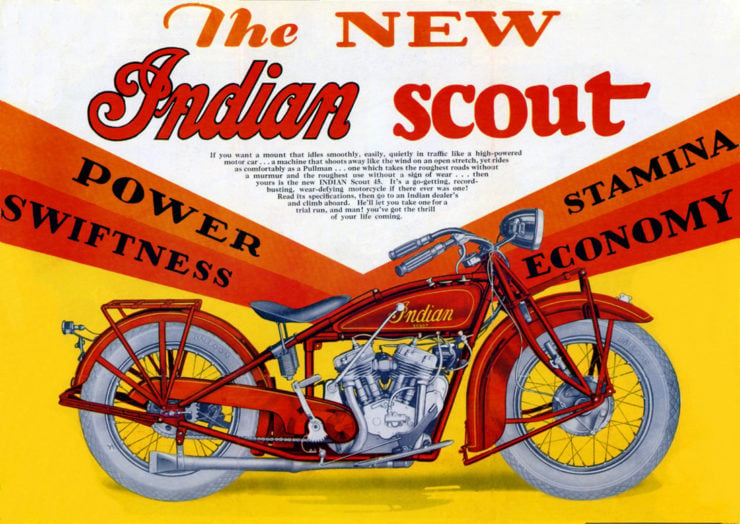
Photo Credits: Bonhams, Hendee Manufacturing Company, Indian Motocycle, RM Sotheby’s.

